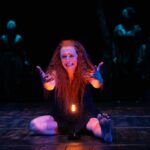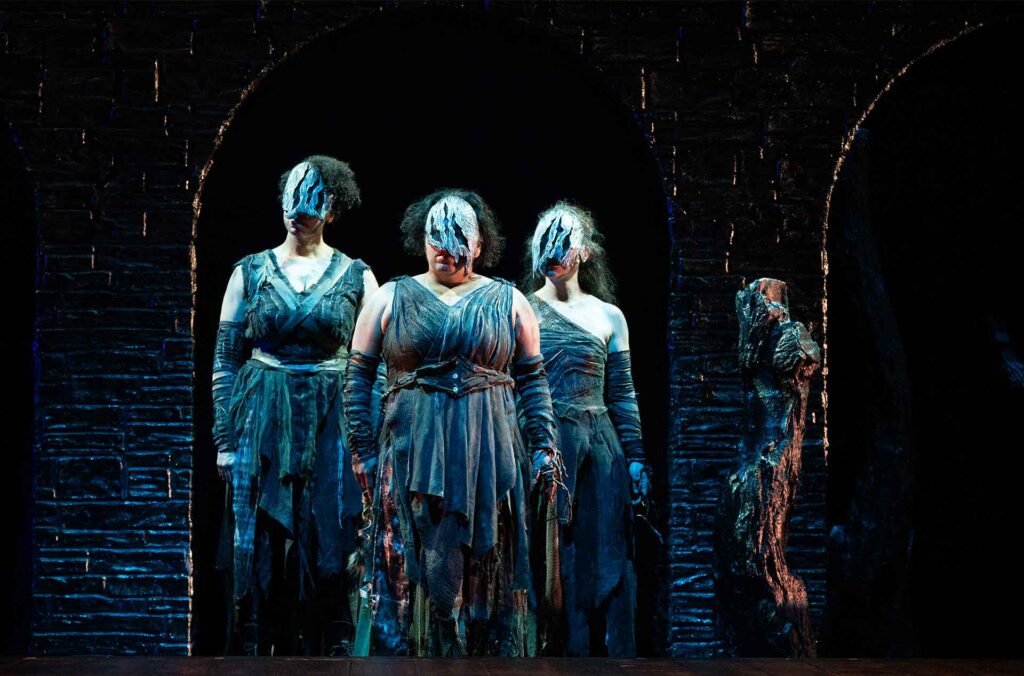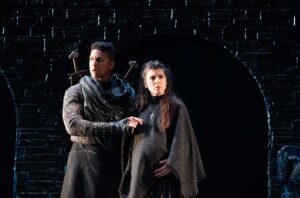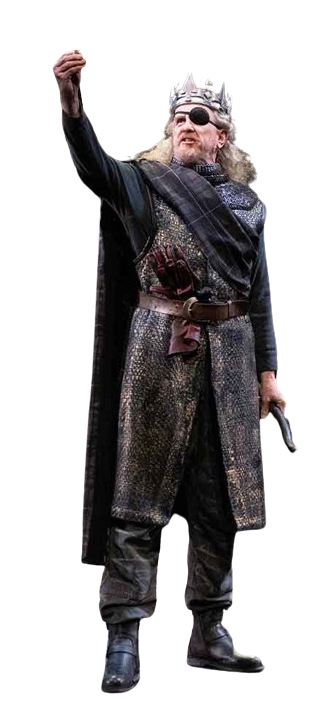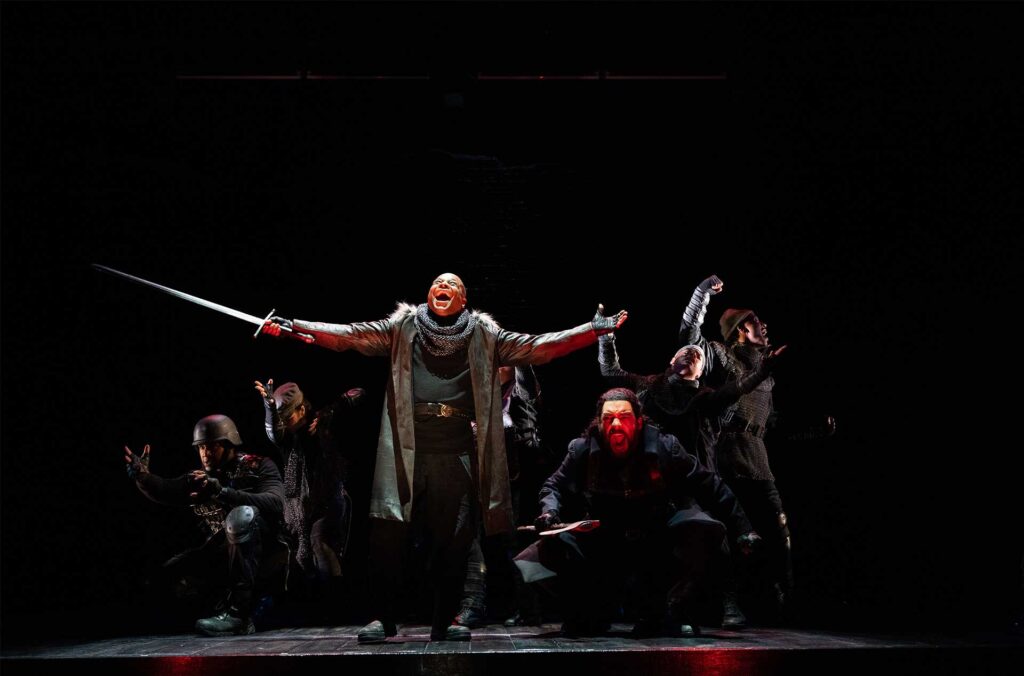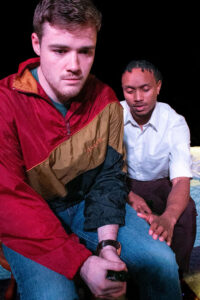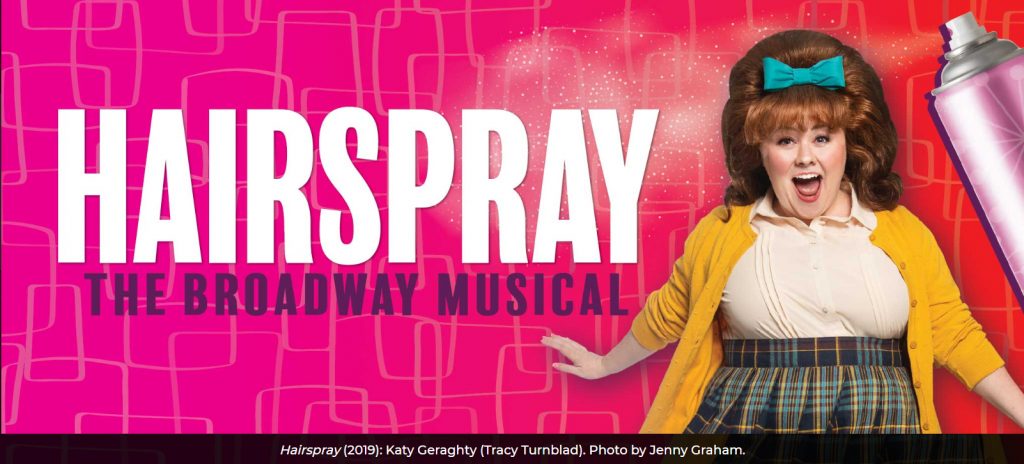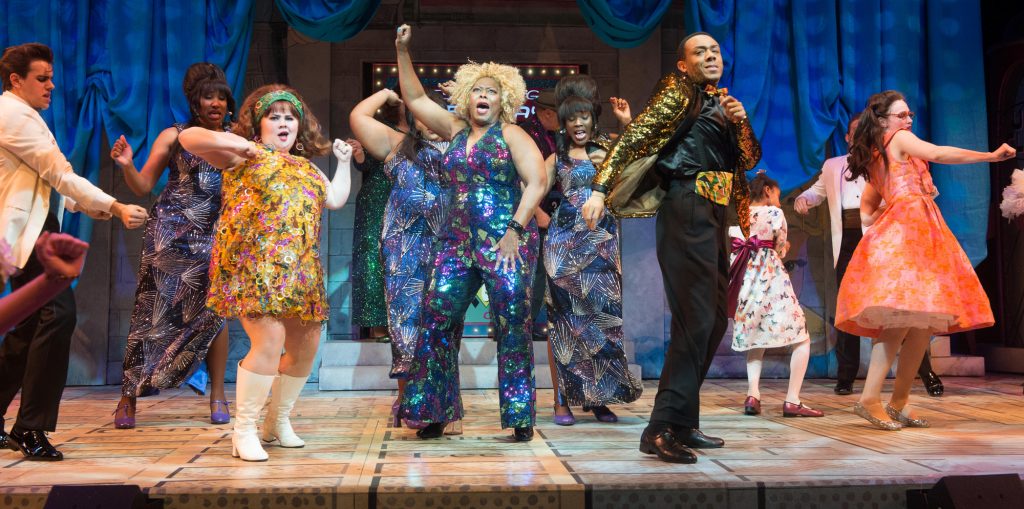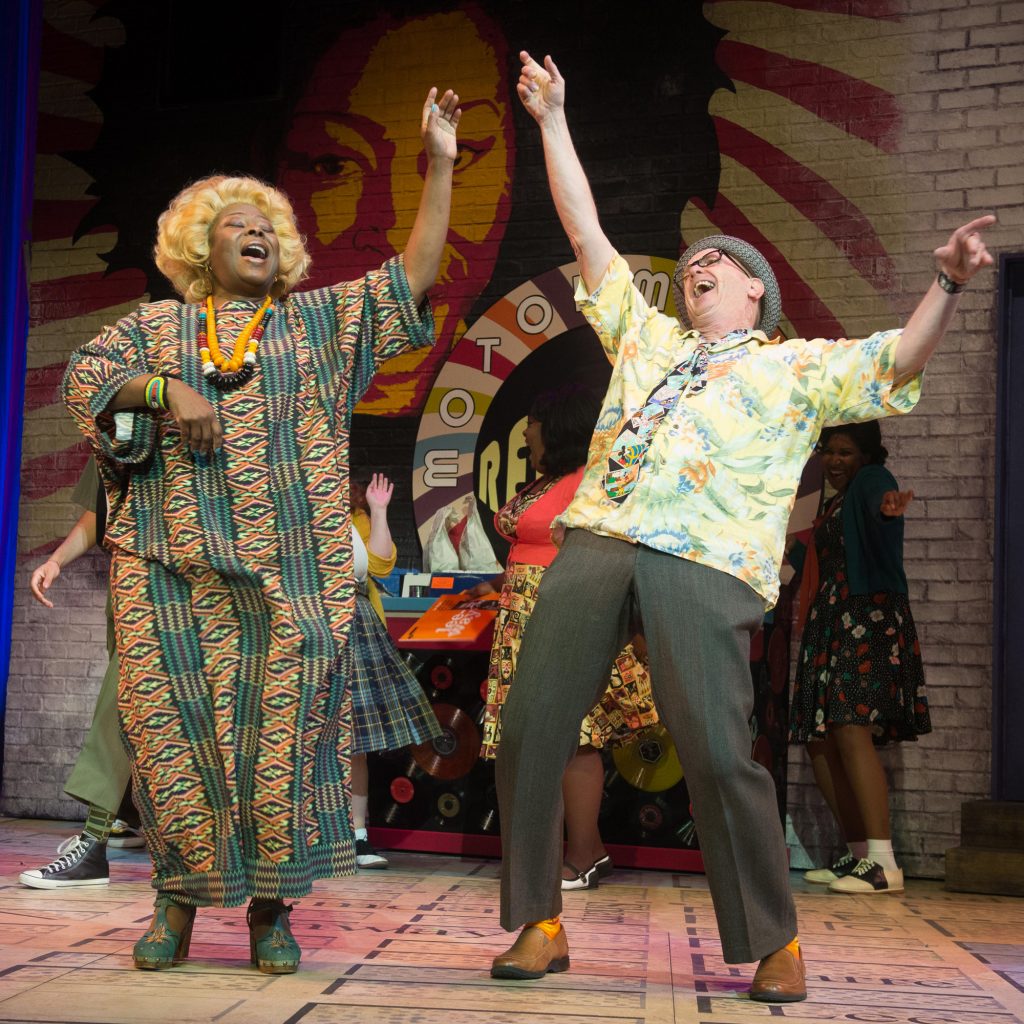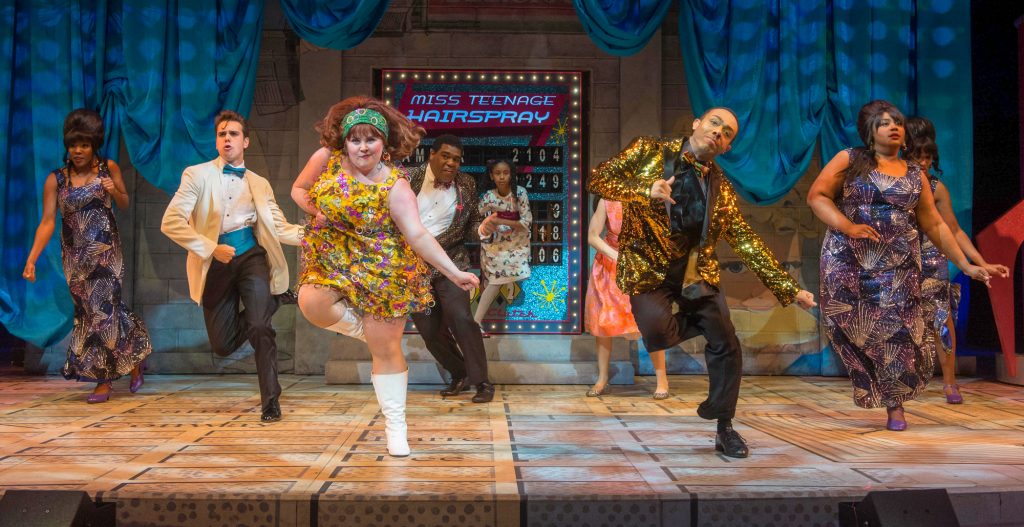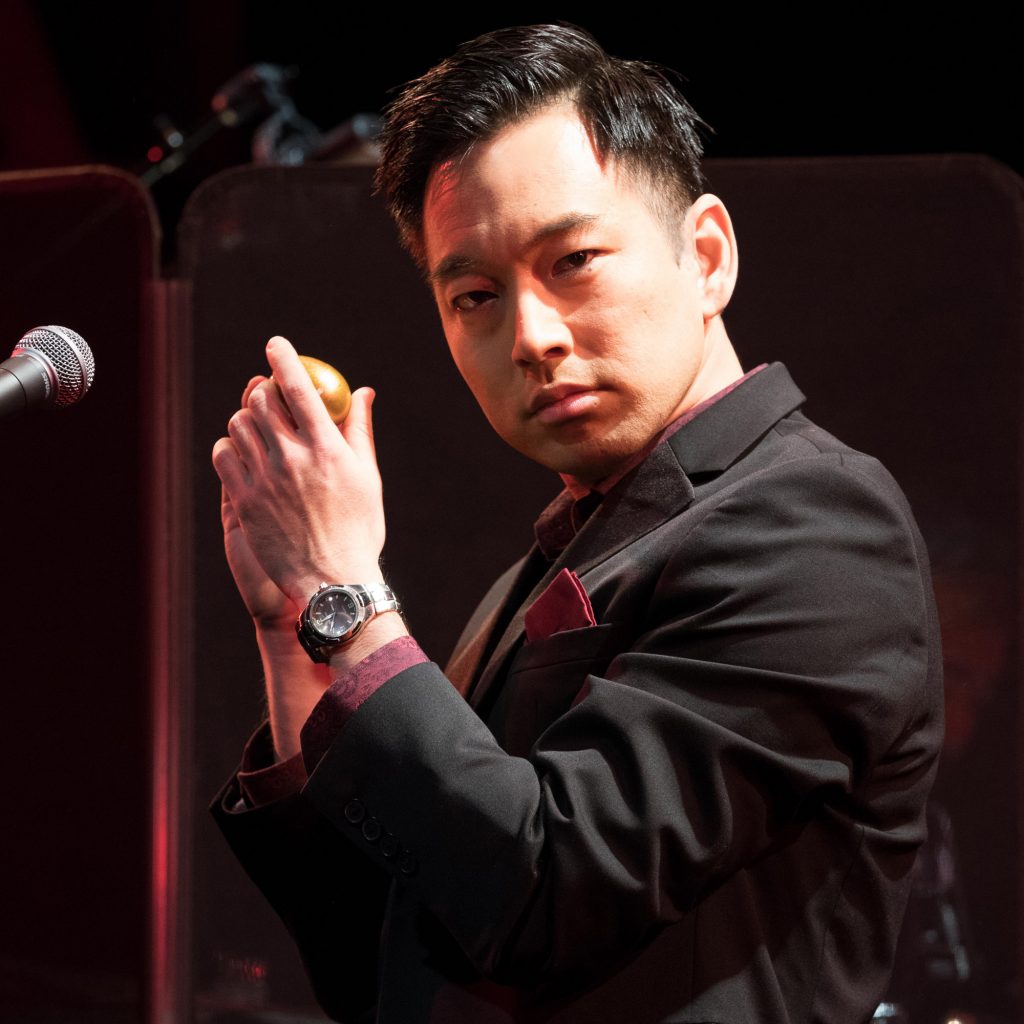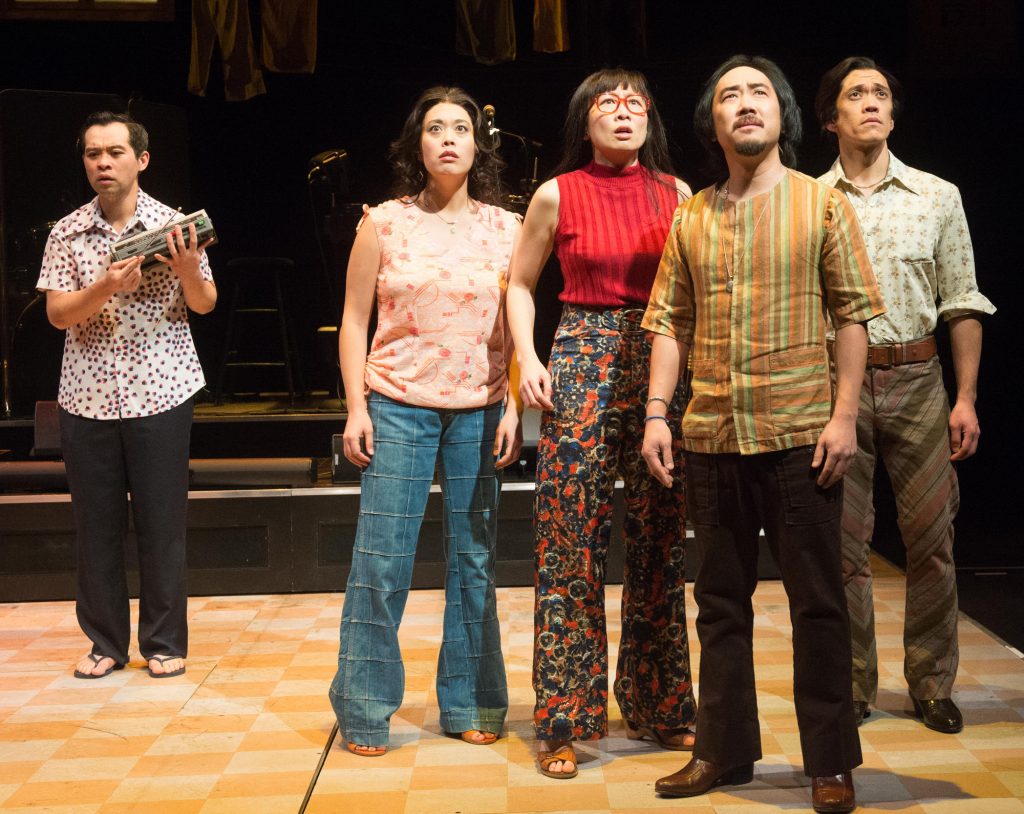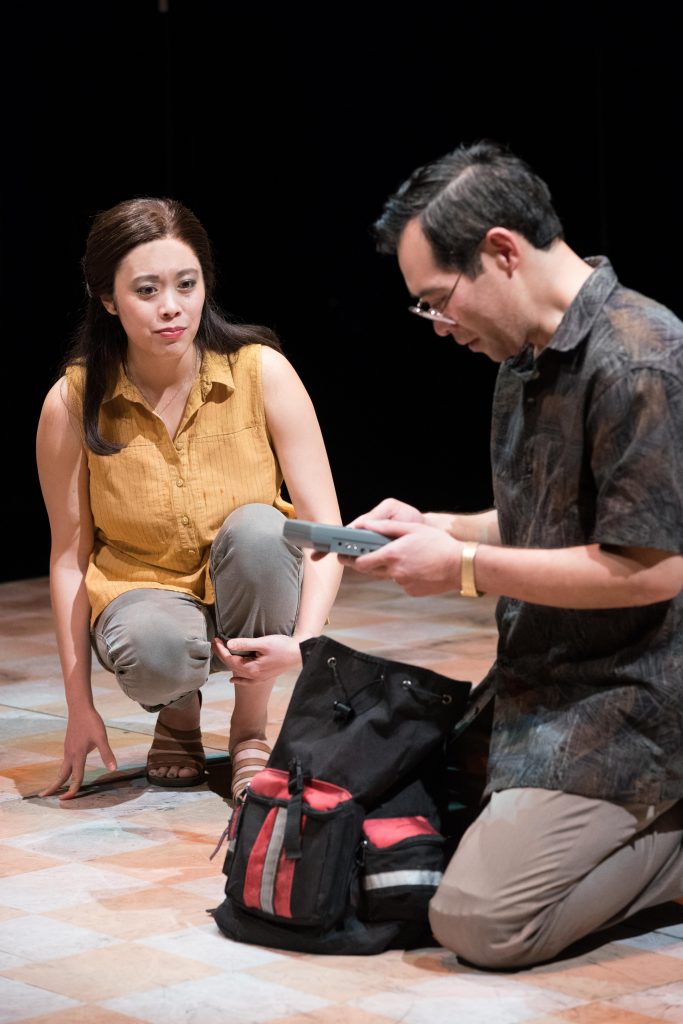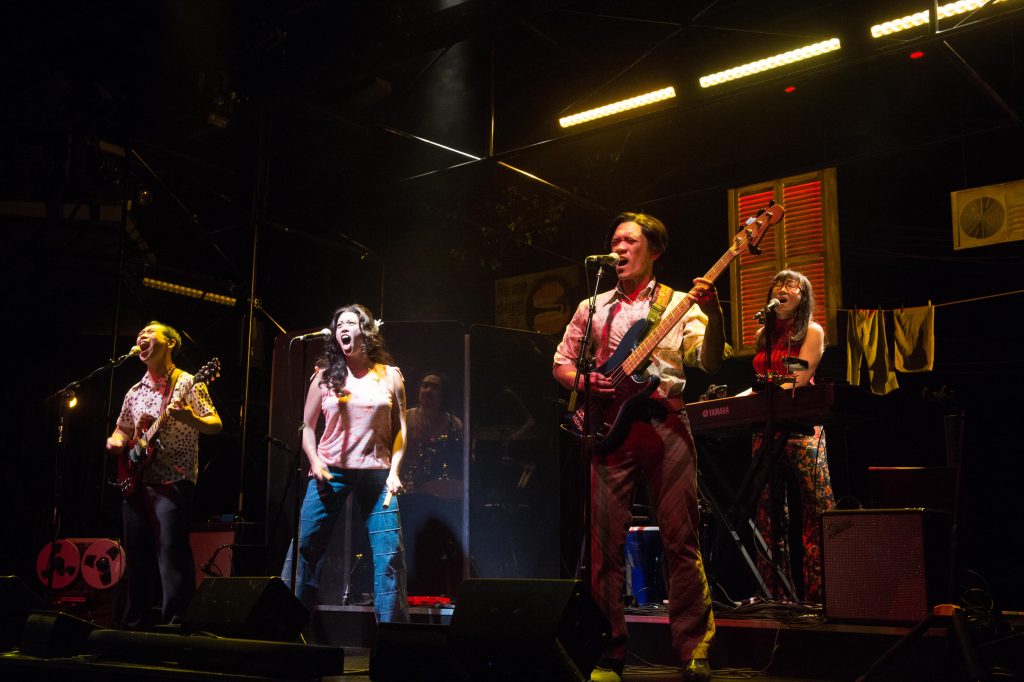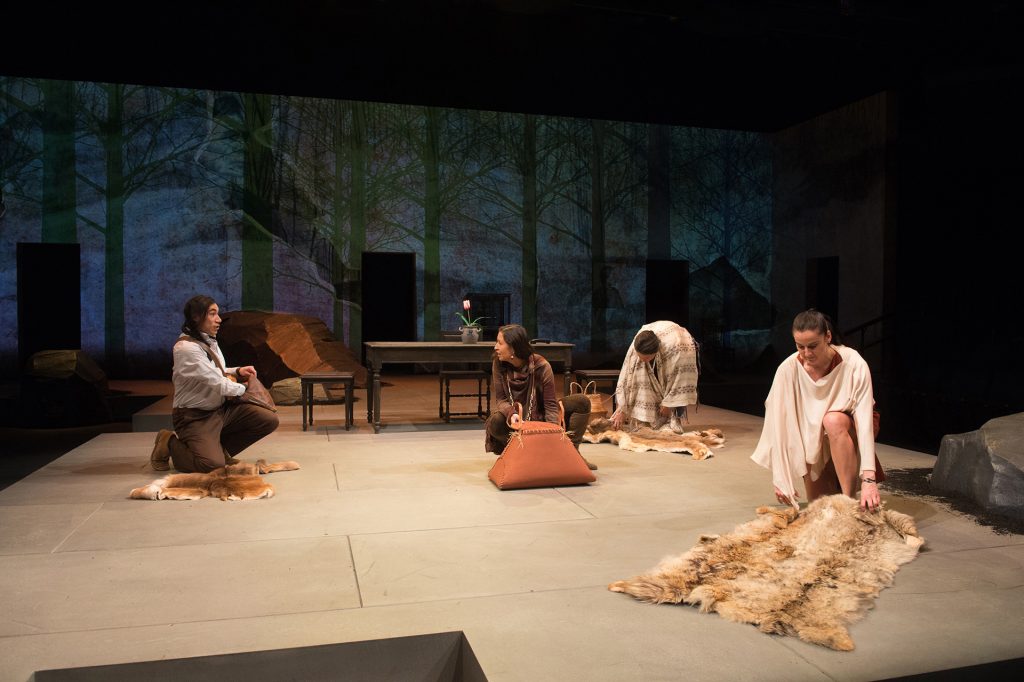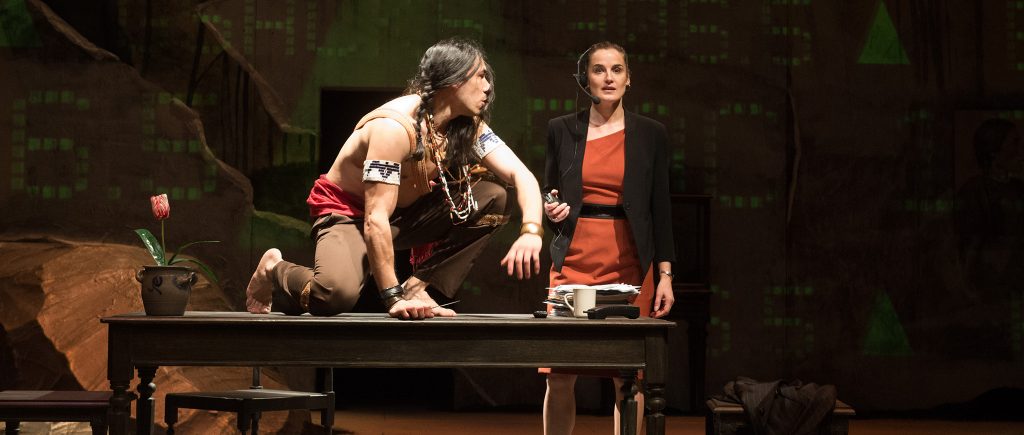“Macbeth” at the Oregon Shakespeare Festival
Macbeth
by William Shakespeare
Directed by Evren Odcikin
Ashland, OR at the Oregon Shakespeare Festival
 In decades of play going I had never seen even a “good” Macbeth. In great theaters with famous stars playing key roles we still have always gone away marveling at the words but disappointed in the story and characters.
In decades of play going I had never seen even a “good” Macbeth. In great theaters with famous stars playing key roles we still have always gone away marveling at the words but disappointed in the story and characters.
We had come to believe that there was so much chaos, blood, and incoherent scheming written into the play that the best that you could expect from seeing Macbeth was a series of memorable soliloquies and audition moments.
SMACK! My head (and emotions) are still spinning from the two times (so far) that I have seen OSF’s Macbeth. This production has characters, nuance, coherence, and still the amazing language and events. It is not a good Macbeth, it is a spectacular Macbeth. It is a spectacular show.
Under the direction of Evren Odcikin, Macbeth (Kevin Kenerly) and Lady Macbeth (Erica Sullivan) clearly love each other and are trying to help one another achieve their dreams. They are not just yelling threats and evil plans, but are actually thoughtful, hesitant, and, well, human.
Kenerly and Sullivan are perfect. You can watch and feel them think, worry, make bad decisions, worry, and try to achieve their dreams. Too often Lady Macbeth and Macbeth are shown to be absolute, unmitigated evil, plotting without hesitation. Not this OSF couple.
They hug and support each other as they contemplate actions they know are fraught but which will help them achieve goals they both want.
The Macbeths are so good, it is tempting to comment endlessly about them. But, there are so many other excellent touches and characters and moments.
The play focuses on people and their interactions. The performance begins with most of the company presenting ready for battle in a well choreographed and well snarled opening. The beginning introduces the theme felt throughout the play. What the Macbeths and others do affect the whole community/country.
Sure, there are some quiet scenes like the impactful mad scenes of Lady Macbeth. But at other times characters on center stage are flanked quietly by watchers so that you feel that the whole of Scotland is involved. I particularly liked the circle of witches that watched the later battle scenes. They watched the unfolding of what they prophesized which made it feel more powerful and mystic.
Speaking of witches (Kate Hurstler, Amy Lizardo, Jennie Greenberry and Auston Henderson as Hecate) … wow! The costumes, movement, and rhythmic chanting are indeed magic. Not necessarily happy magic, but full of powerful import. Revelatory, sometimes eerily musical, and truly spooky, these witches and their scenes are completely integrated into the story we are experiencing. Sometimes I had to strain to understand what they were foretelling, especially when Hecate was broadcasting. But, I felt as a human it was appropriate for me to have to work to understand what I was hearing. (Still, clearer audio for Hecate would be appreciated.)
Damn, I feel compelled to return to how this Macbeth is different from all others. Yes, there are many speeches about blood and plotting deaths and more blood. But, in this OSF show the characters say the famous lines with pauses and reflection. They aren’t just words from “The Best of Shakespeare” or other dry source. These reflect feelings of the characters that they are compelled to share.
Never, never, never have I had any real emotion at a Macbeth. So, I found myself almost annoyed as I teared up listening to the heartbreak of Macduff (Jaysen Wright) as he talked about the murder of his wife (Gabriela Fernandez-Coffey) and children. I know the speech about the horrible murders we witnessed in a previous scene. It’s powerful and reinforces how evil Macbeth is. But, Wright’s phrasing, spacing, and physical look just reached out and got me. I felt like I should have known better, but this performance was too good to keep out of my heart. Intense humanness kept enriching scenes throughout the afternoon.
Looking over the cast I feel like I have to give a shout out to everyone. How can I not mention the straight-forward goodness of old King Duncan (David Kelly) and how Kelly pulled off being the Porter (and Siward) with great fun and without any feel of his previous role hanging on?
Admirable Banquo (Armando McClain) was a careful and believable cohort of Macbeth. He was played as a fully present and loyal man, a perfect person to show the audience how Macbeth had gone bad and to torment Macbeth as a ghost. (Two nits to pick: I am not sure about the horns/branches/whatever on the ghost’s head at the banquet. I am sure they were well thought out, but I need education. Secondly, McClain also played the doctor in Lady Macbeth’s mad scenes. He was too important as Banquo not to be recognizable as the doctor. A different actor should have been used.)
Malcom (Dane Troy) was weak in the opening but commanded the stage as the new king the second performance I saw. Meanwhile, in both performances Nicole Villavicencio Gonzalez was terrific as the endangered children of Banquo and McDuff and Lady McDuff (Gabriela Fernandez-Coffey) was excellent as a overcome, doomed, worried parent.
Overall this performance is unreasonably, unexpectedly great. The direction and acting gave characters character and the storyline a true story. This is another OSF show that makes me think I never need to see this play again because I have seen the best possible version. (Of course, I always hope that some other production will prove me wrong!)
My intellectual and emotional judgement is that his Macbeth is a must-see, must-experience artistic event. I rate it ![]()


